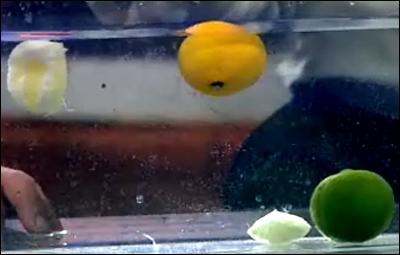
What you need:
A lemon (lemons are usually bigger and oval and yellow-skinned), a lime (limes are usually smaller and round and green-skinned) (Make sure the lemon and lime you use for this experiment are of roughly the same size), a knife, water, a jar
What to do:
1. Fill the jar with water
2. Drop the lemon and the lime into the water. What do you see?
3. Next, peel the lemon and the lime using the knife. Now drop both the peels into the water.
What happens:
When both fruits still have their peels you can see that the lemon floats on water, while the lime usually sinks The lemon rind is thicker and more porous than the lime’s, which could be the reason for the lemon floating (thanks to those air pockets in its skin). So, you remove the peels of both fruits and drop them into water. You will find that the lemon rind floats and the lime’s doesn’t!
Why?
The floating of the lemon and the sinking of the time is something that has perplexed the scientific community for a long time.
The most straightforward explanation researchers could come up with is the density (which means the number of particles or molecules squeezed together in a small space) of the lime close to the density of water but just slightly higher than it. That makes the lime just a tad heavier than the water and it sinks On the other hand, the density of the lemon is also very close the density of the water, but it is just slightly less. So the lemon can float.
Incidentally, the rind of the lime (separated from the flesh) also sinks in water, while that of the lemon floats!
Picture Credit : Google




